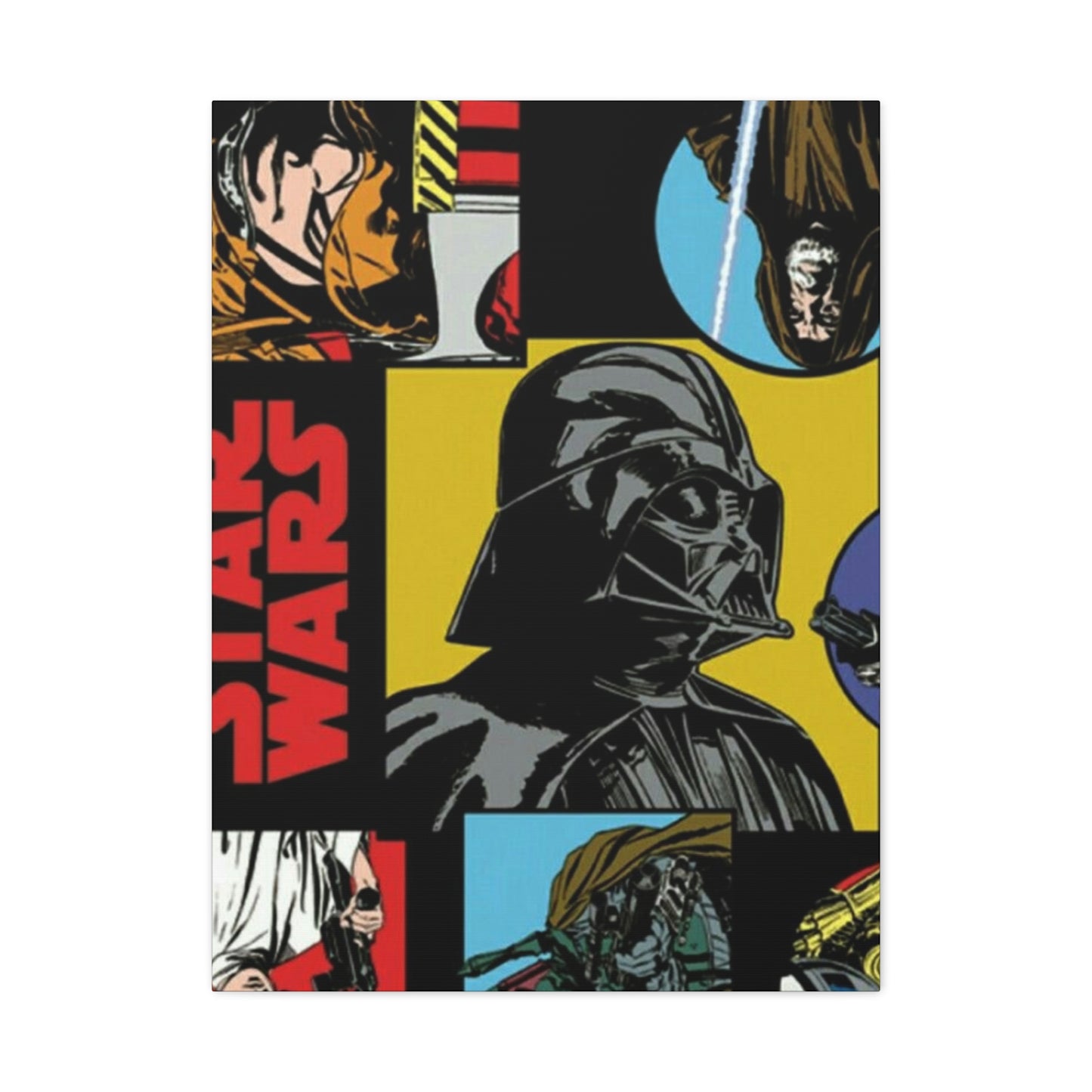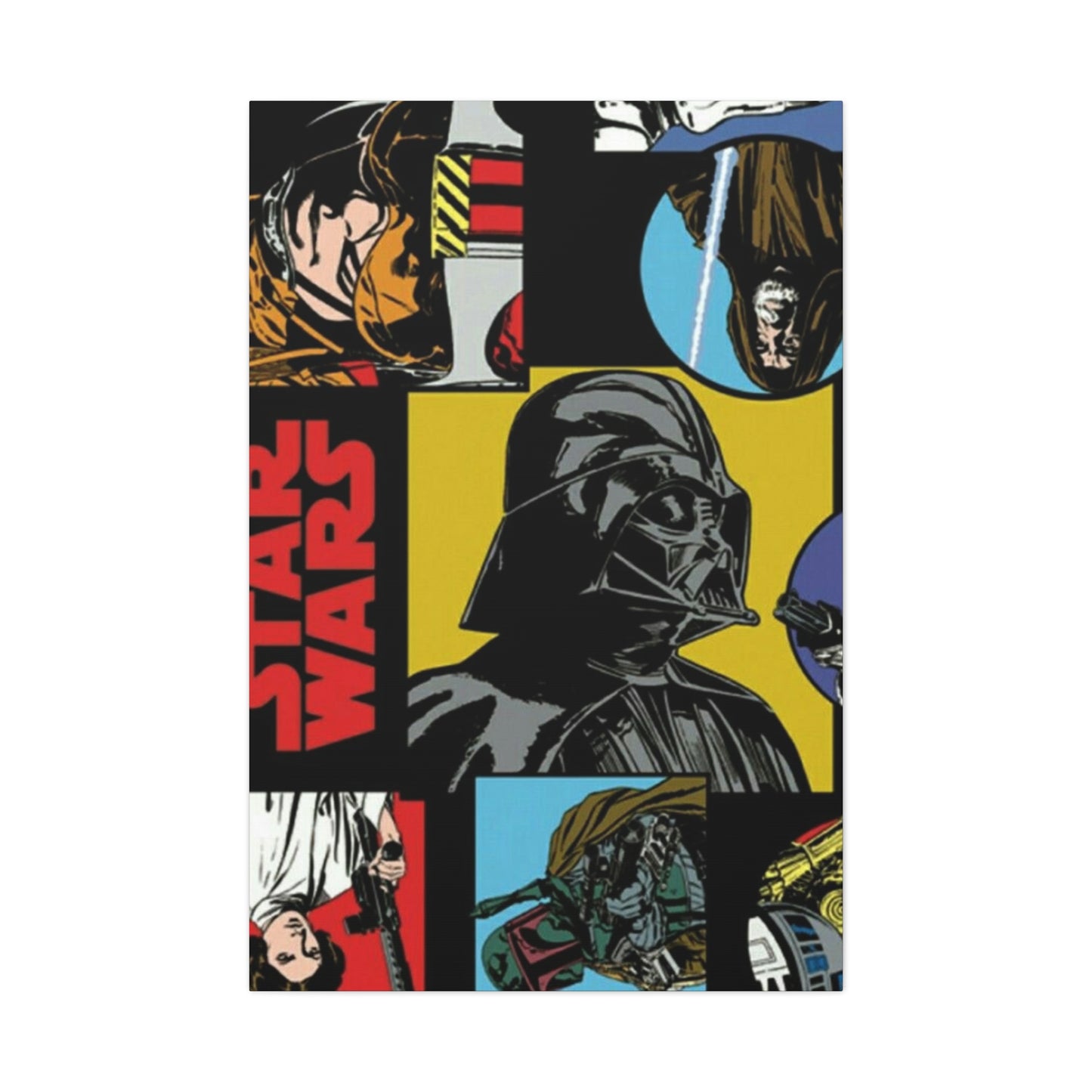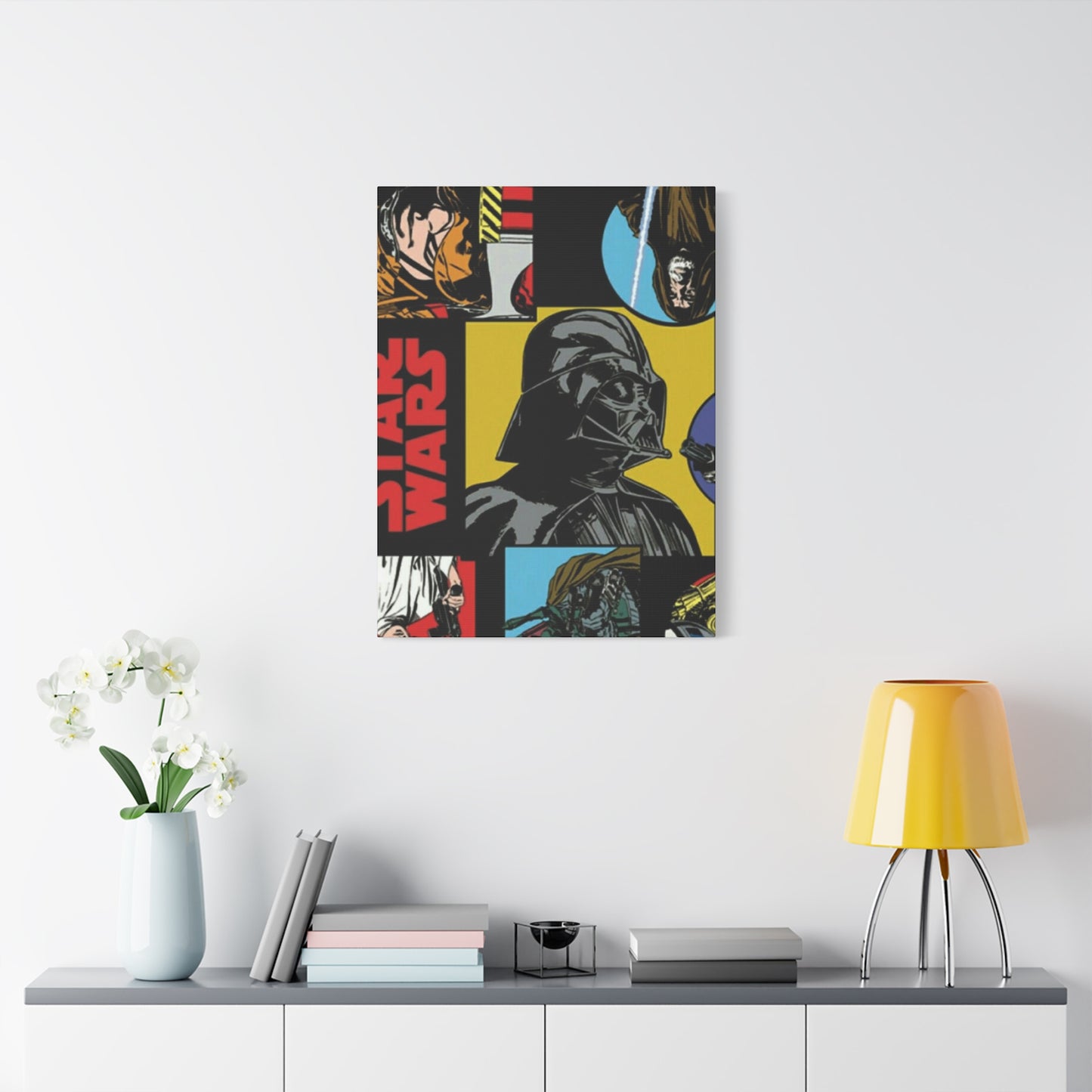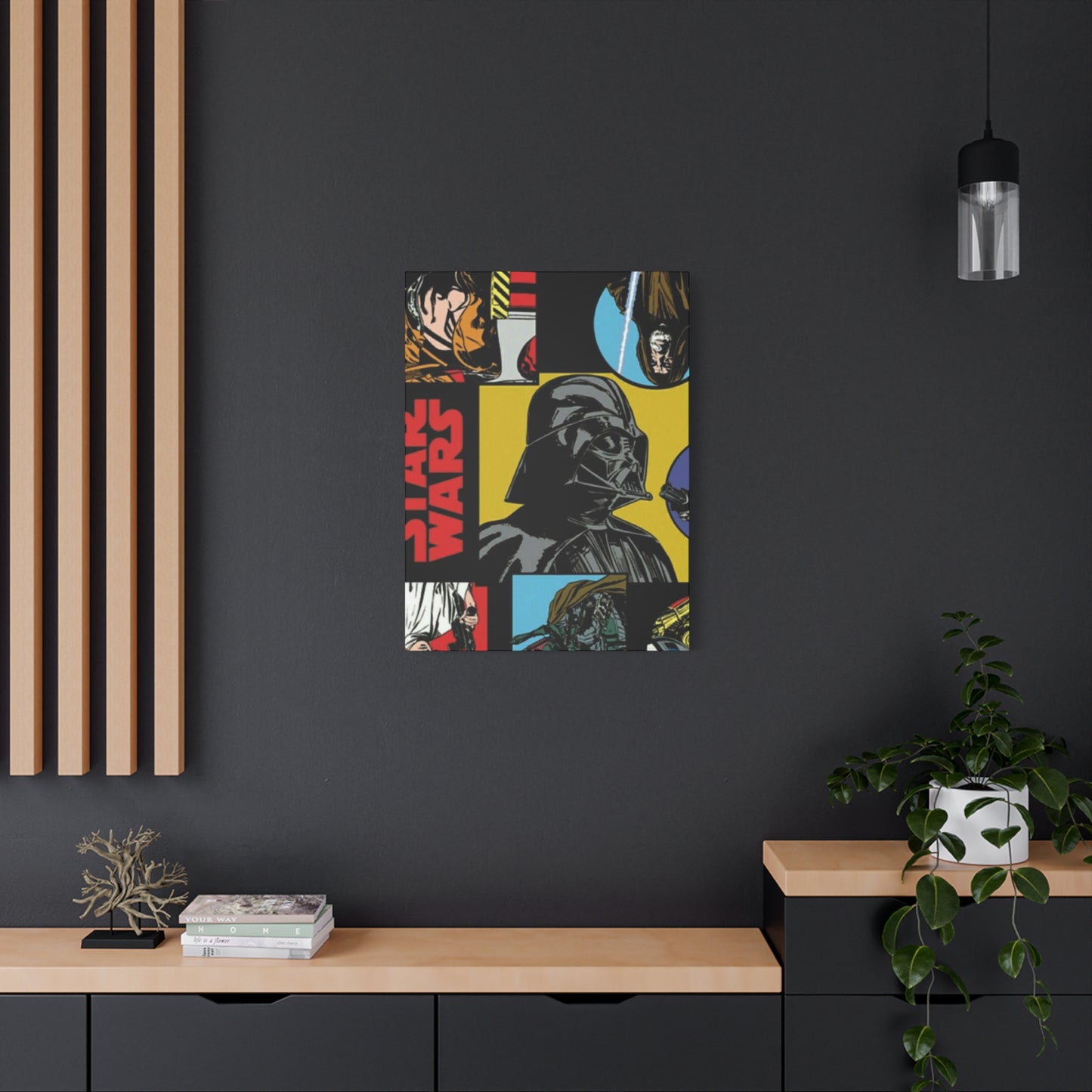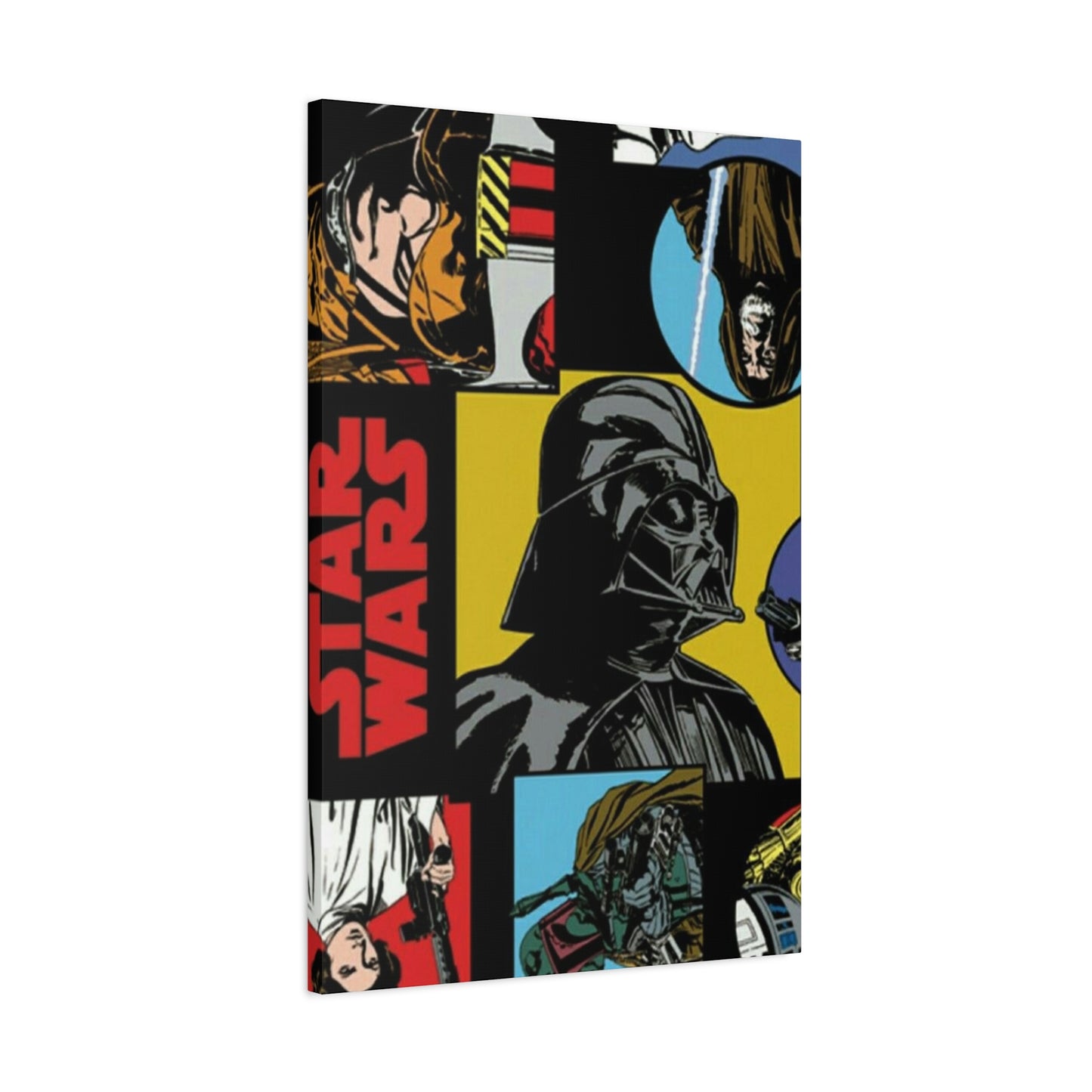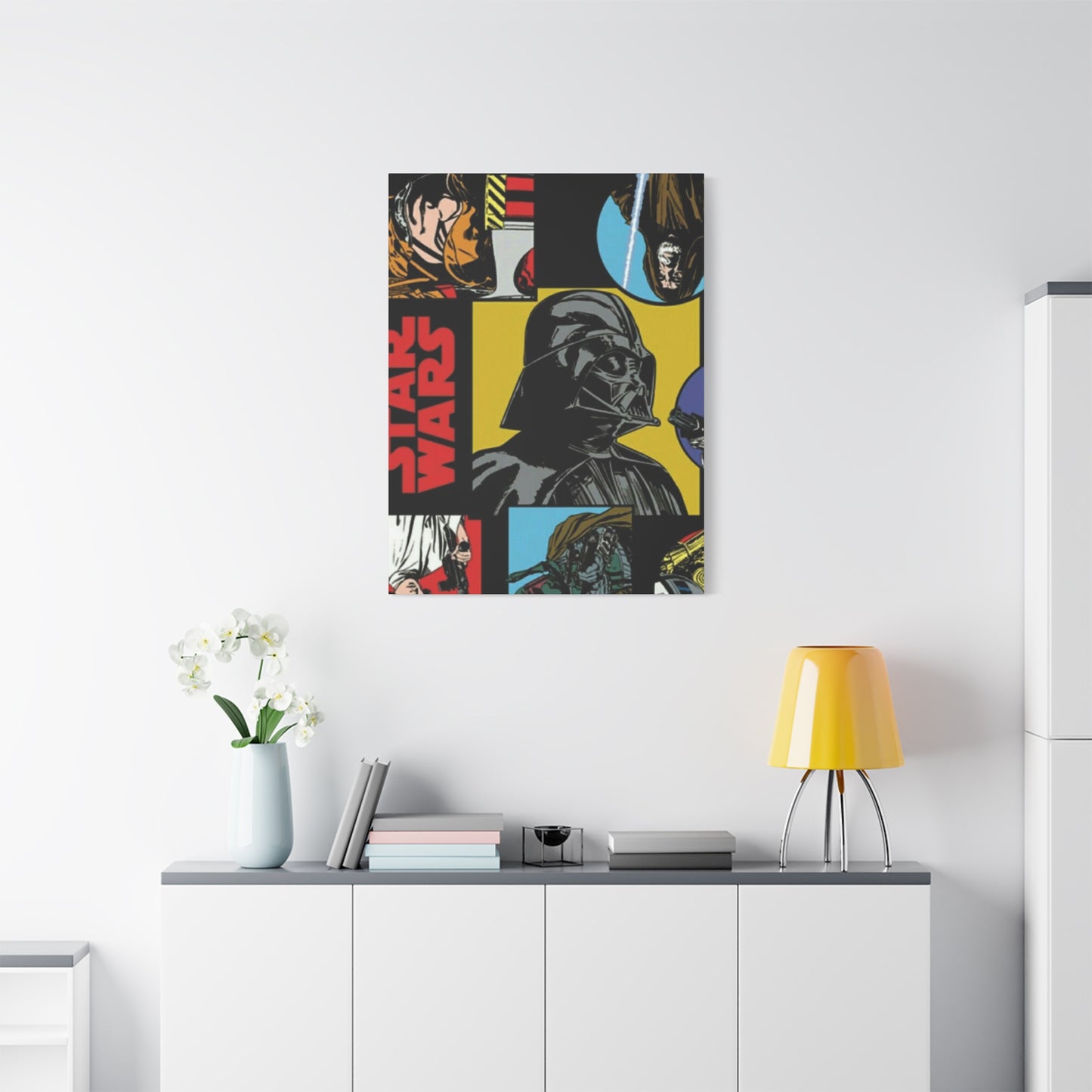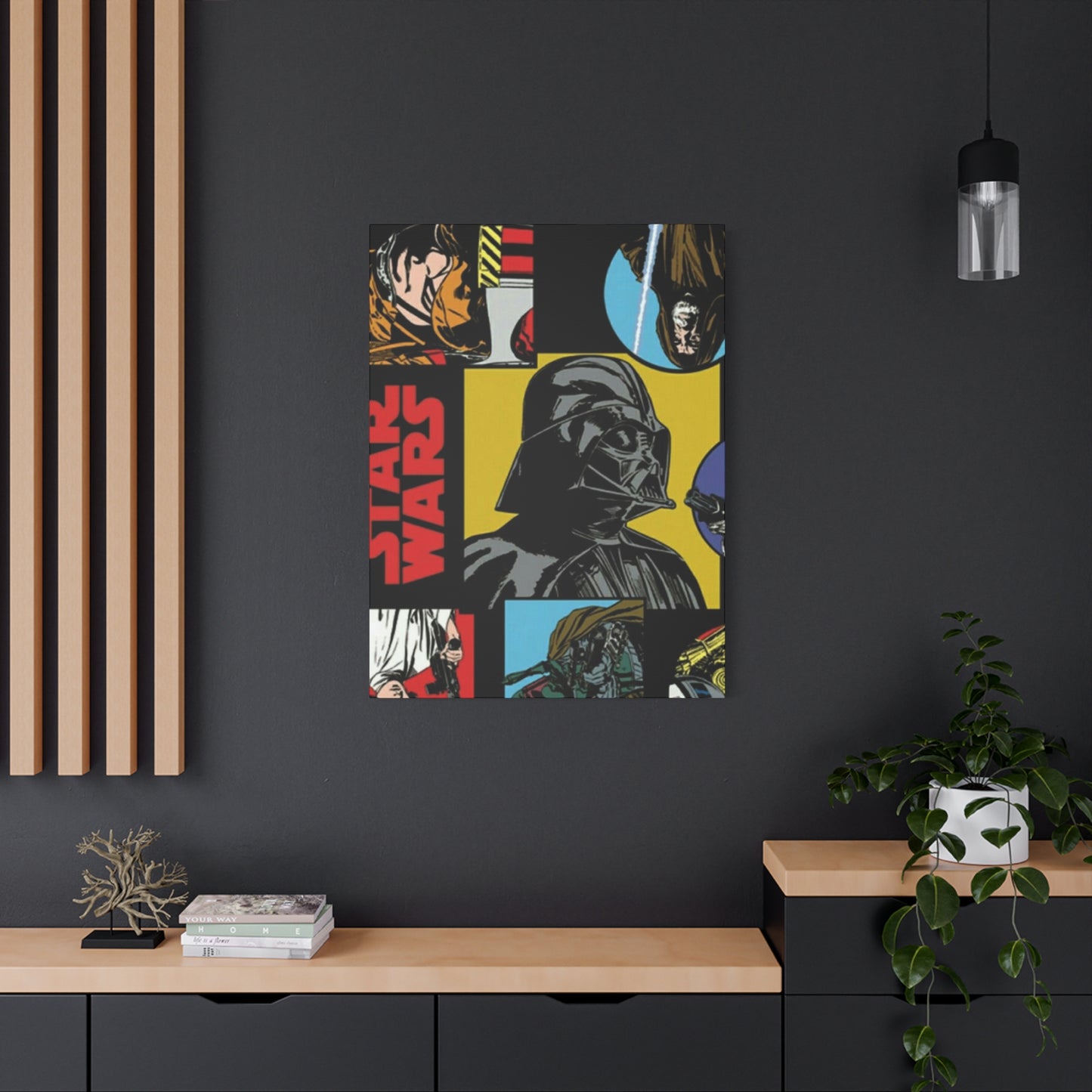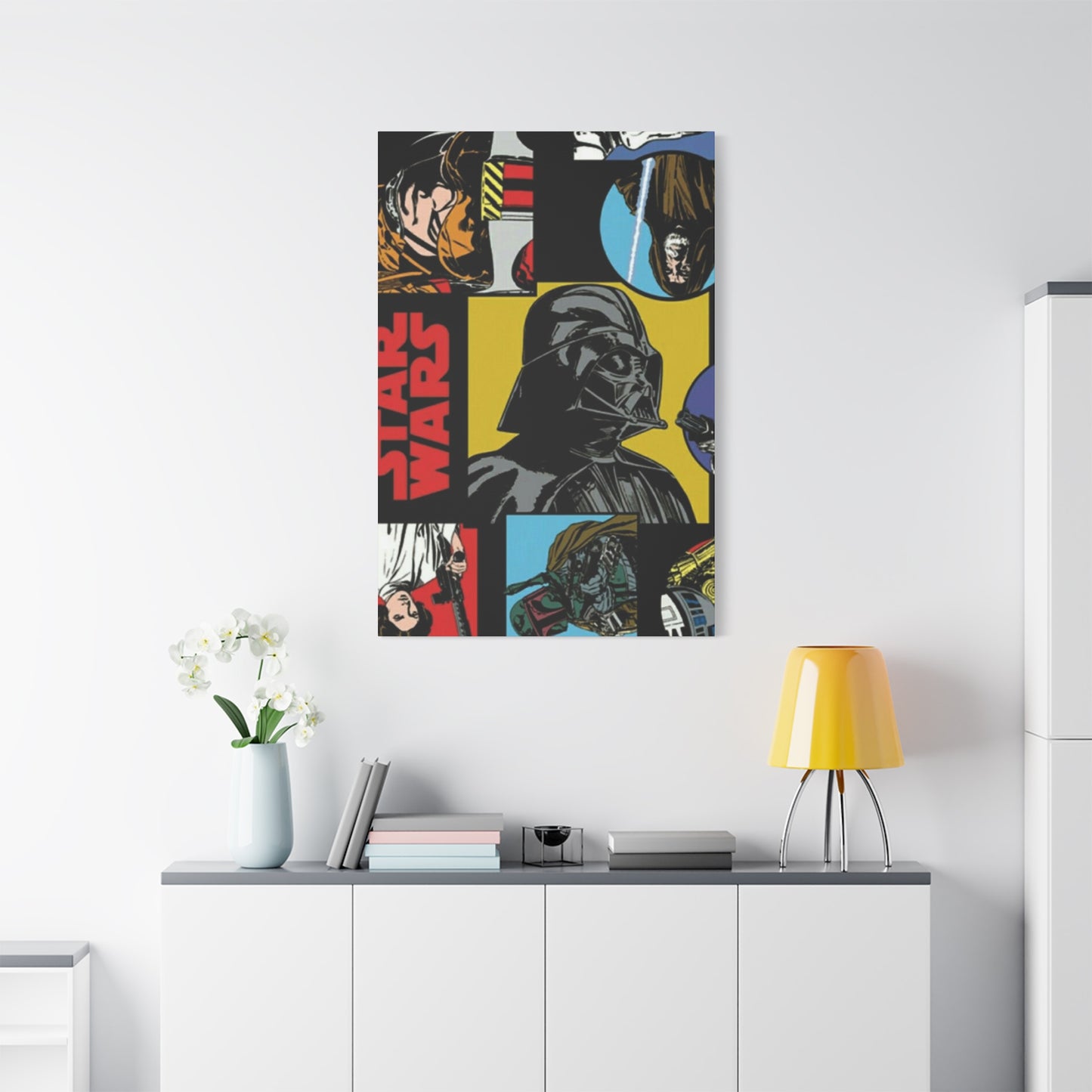The Ultimate Guide Star Wars Characters Wall Art Collection: A Must-Have for Every Fan
The galaxy far, far away has captured the imagination of millions through its memorable characters, epic battles, and timeless storytelling. For decades, enthusiasts have sought ways to bring the essence of this beloved universe into their personal spaces. Character-focused artwork has become one of the most popular methods for celebrating the franchise's rich legacy, offering fans an opportunity to showcase their passion through carefully curated visual displays.
The appeal of character-focused artwork extends beyond simple decoration. These pieces serve as conversation starters, nostalgia triggers, and artistic statements that reflect personal connections to the narrative. Whether featuring heroic rebels, sinister dark side users, or beloved droids, each piece tells a story and evokes memories of thrilling adventures across multiple films, series, and expanded universe content.
The Evolution of Character-Focused Artwork in Popular Culture
Character-based artwork has undergone remarkable transformation since the original trilogy debuted in the late 1970s. Early promotional materials featured painted compositions that captured the imagination of audiences worldwide. Artists created dramatic scenes that conveyed the epic scope of the narrative while highlighting key figures who would become cultural icons.
As technology advanced, so did the sophistication of character artwork. Digital illustration techniques enabled artists to create more detailed and dynamic compositions. The prequel trilogy introduced new design aesthetics, while the sequel trilogy and various streaming series expanded the visual vocabulary further. This evolution has given collectors an incredibly diverse range of styles to choose from when selecting pieces for their collections.
The impact of character artwork extends into fine art galleries, where limited edition prints and original paintings command significant attention. Museums have hosted exhibitions dedicated to concept art and promotional materials, recognizing the cultural significance of these visual representations. This elevation from commercial product to respected art form reflects the profound impact these characters have had on multiple generations.
Contemporary artists continue to reinterpret classic characters through various artistic movements. Minimalist designs reduce figures to essential shapes and colors, while hyperrealistic portraits capture every detail with photographic precision. Pop art influences bring bold colors and graphic elements, and abstract interpretations challenge viewers to see familiar faces in new ways. This artistic diversity ensures that every enthusiast can find pieces that resonate with their personal aesthetic preferences.
Understanding Different Artistic Styles for Character Displays
The variety of artistic approaches available for character-focused displays offers something for every taste and interior design scheme. Classic cinematic style recreates the look of original promotional materials with painted or illustrated compositions that feel timeless. These pieces often feature multiple characters arranged in dynamic compositions that suggest action and adventure.
Minimalist interpretations have gained significant popularity in recent years. These designs distill characters down to their most recognizable elements, using simple shapes, limited color palettes, and clean lines. A helmet silhouette, a distinctive weapon, or a signature color scheme becomes enough to instantly identify beloved figures. This approach works particularly well in modern, contemporary, or Scandinavian-inspired interior spaces where simplicity and visual clarity take precedence.
Vintage-inspired artwork taps into nostalgia by mimicking the aesthetic of original trilogy promotional materials. Weathered textures, muted color palettes, and retro typography transport viewers back to the excitement of experiencing these stories for the first time. These pieces appeal to collectors who appreciate the historical context and want to capture the feeling of discovering the franchise decades ago.
Photorealistic portraits represent another popular category, capturing characters with incredible detail and lifelike quality. These pieces often focus on facial expressions, costume textures, and lighting effects that make subjects appear almost three-dimensional. The technical skill required for such work makes these pieces particularly impressive and worthy of prominence in any collection.
Abstract and geometric interpretations offer bold alternatives for those seeking unconventional approaches. Artists might fragment a character's face into colorful polygons, create portraits from typographic elements, or use splatter techniques and vibrant colors to suggest energy and movement. These pieces make strong visual statements and work well as focal points in creative or eclectic spaces.
Material and Medium Options for Character Displays
The physical characteristics of artwork significantly impact both appearance and longevity. Different materials and production methods offer distinct advantages depending on display goals, environmental conditions, and budget considerations.
Canvas prints provide texture and depth that enhances visual interest. The woven fabric surface creates subtle dimension while remaining lightweight and easy to mount. Gallery-wrapped canvases with printed images extending around frame edges create finished looks without requiring separate frames. This format works particularly well for painterly or illustrated designs where texture enhances artistic effect.
Paper prints offer the most extensive selection of available images and the most affordable entry point for collectors. High-quality archival papers resist fading and deterioration when properly displayed away from direct sunlight and moisture. Framing paper prints behind glass or acrylic provides protection while allowing for mat borders that add visual sophistication and separation from frames.
Metal prints create modern, sleek presentations with vibrant colors and high contrast. Images are infused directly onto aluminum sheets, creating durable, lightweight pieces with distinctive sheen. The contemporary appearance works particularly well for minimalist designs and fits modern interior aesthetics. Metal prints resist moisture and require no additional framing, though they work best in spaces without direct sunlight to prevent glare.
Acrylic prints mount images behind clear acrylic panels, creating depth and luminosity that makes colors appear more vivid and saturated. Light passes through the transparent material and reflects off the image layer, creating visual impact that seems almost illuminated. These pieces make striking focal points with their glossy, contemporary appearance.
Wood prints transfer images onto natural wood surfaces, incorporating grain patterns and texture into the artwork itself. This rustic approach works well for vintage-inspired designs or in spaces with natural, organic design elements. Each piece is unique due to variations in wood characteristics, adding individuality to collections.
Fabric tapestries offer textural softness and bohemian appeal. Woven or printed textile pieces can be hung using rods, clips, or directly mounted to surfaces. The fabric medium creates warmth and visual interest distinct from rigid mounting options, working particularly well in bedrooms or casual spaces.
Framing Strategies for Character Artwork
Framing choices dramatically affect how artwork is perceived and how well it integrates into surrounding spaces. Thoughtful frame selection enhances pieces while protecting them from environmental damage and physical wear.
Traditional wood frames offer timeless appeal and extensive style variety. Dark woods like walnut or espresso create sophisticated, formal presentations suitable for classic interiors. Light woods including oak, maple, or natural finishes provide casual, approachable aesthetics. Distressed or weathered wood frames enhance vintage-style artwork while adding textural interest.
Metal frames deliver contemporary, industrial aesthetics that complement modern interiors. Sleek black metal creates bold contrast and works well for minimalist designs. Brushed silver or gold-toned metals add subtle sophistication without overwhelming artwork. The clean lines and simple profiles of metal frames keep focus on the displayed images.
Floating frames create the illusion that artwork hovers within the frame structure, adding dimension and visual interest. This mounting style works particularly well for canvas or panel-mounted pieces. The shadow gap between artwork and frame creates depth while the transparent or minimal frame structure maintains focus on the image itself.
Gallery frames feature simple profiles and minimal ornamentation, directing attention to artwork rather than frame decoration. These understated presentations work well for contemporary pieces or when displaying multiple works together. The consistency of simple frames across a collection creates cohesion without visual competition between pieces.
Shadow box frames provide depth for dimensional objects or layered artwork. These frames work well for mixed media pieces or when incorporating character-related memorabilia alongside printed images. The added depth creates display opportunities beyond flat artwork alone.
Matting adds borders between artwork and frames while providing visual breathing room. White or cream mats create clean, gallery-style presentations suitable for formal spaces. Colored mats can complement artwork hues or create deliberate contrast. Double matting with contrasting colors adds sophistication and visual interest to framed pieces.
Creating Gallery Arrangements with Multiple Pieces
Displaying multiple character-focused pieces together creates more significant visual impact than individual works in isolation. Strategic arrangement transforms collections into cohesive displays that tell stories and create conversation-worthy focal points.
Symmetrical grid arrangements bring order and formality to multi-piece displays. Pieces of identical size hung in precise rows and columns create clean, organized presentations suitable for modern spaces. This approach works particularly well when displaying character rosters, showing multiple figures with consistent styling and framing.
Asymmetrical salon-style arrangements embrace organized chaos with various sizes and orientations combined into unified displays. Starting with the largest central piece and building outward with smaller works creates balanced asymmetry. This approach allows incorporation of diverse artwork while maintaining visual cohesion through consistent spacing, color relationships, or thematic connections.
Linear sequences arrange pieces in single horizontal or vertical lines. Horizontal rows work well along lengthy walls or above extended furniture. Vertical columns emphasize ceiling height or frame doorways and architectural features. Linear arrangements create rhythm and movement while remaining orderly and intentional.
Clustered groupings position related pieces closely together, treating multiple works as single unified displays. Three or four pieces might be hung with minimal spacing to create composite images or suggest close relationships between depicted characters. This approach works well for showing character groups or narrative progressions.
Bilateral symmetry places matching pieces equidistant from central focal points. Identical images flanking entertainment centers, beds, or doorways create formal balance. Alternatively, different but visually weighted pieces can be positioned to create balanced asymmetry with equal visual impact on either side of central references.
Staggered arrangements vary heights and positions while maintaining underlying organizational principles. Pieces might follow stepped patterns or diagonal progressions across walls. These dynamic arrangements create visual interest while maintaining enough structure to avoid appearing random or chaotic.
Corner arrangements wrap around room corners, connecting adjacent walls through continuous displays. This approach works well for creating immersive environments and maximizing display space in smaller rooms. Corner arrangements can follow walls organically or create deliberate geometric patterns that emphasize architectural features.
Lighting Techniques to Enhance Character Displays
Proper lighting transforms character artwork from simple decoration into exhibition-quality displays. Strategic illumination reveals details, creates ambiance, and protects pieces from harmful light exposure simultaneously.
Picture lights mount directly above or below individual pieces, providing focused illumination that highlights artwork while creating dramatic shadows on surrounding walls. LED picture lights offer energy efficiency and minimal heat production that protects artwork from damage. Adjustable arms allow precise positioning for optimal lighting angles.
Track lighting provides flexibility for illuminating multiple pieces with independently adjustable fixtures. Directional spotlights can be positioned to highlight specific works while accent lights wash walls with general illumination. This approach works well in dedicated gallery spaces or rooms with multiple display areas requiring different lighting solutions.
Recessed spotlights integrate seamlessly into ceilings, providing clean, unobtrusive illumination. Adjustable trim rings allow angling light precisely toward artwork. This permanent lighting solution works best in finished spaces where ceiling modifications are practical and where minimalist aesthetics benefit from hidden light sources.
Wall washing techniques use indirect lighting to illuminate entire walls evenly. This approach works well for creating gallery atmospheres and works particularly effectively with light-colored walls that reflect illumination. Wall washing creates ambient exhibition spaces rather than highlighting individual pieces.
Ambient lighting layers general room illumination with specific artwork accent lighting. Overhead fixtures provide functional light while dedicated artwork lighting adds visual interest and hierarchy. This layered approach creates comfortable, livable spaces that still showcase collections effectively.
Natural light considerations are crucial for artwork preservation. Direct sunlight causes fading and deterioration over time, particularly for paper prints and some fabric materials. Positioning artwork away from windows or using UV-filtering window treatments protects pieces while allowing natural illumination to enhance spaces.
Color temperature affects how artwork appears under artificial lighting. Warm white lights (2700-3000K) create cozy atmospheres and enhance warm tones in artwork. Cool white lights (3500-4100K) provide more accurate color rendering and work well in modern spaces. Daylight-balanced lights (5000-6500K) mimic natural sunlight and reveal colors most accurately.
Room-Specific Display Strategies
Different rooms serve different purposes and present unique opportunities for character-focused displays. Adapting display strategies to room functions ensures artwork enhances rather than conflicts with space usage.
Living rooms often serve as primary display areas due to their central role in homes and frequent use for entertaining. Large statement pieces work well as focal points above sofas or fireplaces. Gallery arrangements can fill feature walls, creating impressive backdrops for seating areas. The living room's social nature makes it ideal for conversation-starting displays that reflect personality and interests.
Home theaters and media rooms provide thematic contexts where character artwork feels naturally integrated. Surrounding entertainment systems with related imagery creates immersive environments that enhance viewing experiences. Acoustic panels printed with character designs combine functional sound treatment with visual appeal. Dim, theater-appropriate lighting allows displays to shine without creating screen glare.
Bedrooms offer opportunities for more personal, intimate displays. Character artwork that represents individual preferences rather than household compromise can be prominently featured. Above headboards, on feature walls, or flanking windows, bedroom displays create personalized retreats that reflect occupant identities and passions.
Home offices and workspaces benefit from inspirational imagery that motivates and energizes. Characters representing determination, wisdom, or success can provide psychological boosts during challenging workdays. Positioning artwork within sight lines from desks creates visual breaks and mental refreshment opportunities during intensive focus periods.
Children's rooms and playspaces welcome colorful, playful character displays that spark imagination and creativity. Durable materials resistant to handling and potential impacts work best in active spaces. Educational elements like character names or inspirational quotes integrate learning with decoration. Growth-appropriate selections ensure displays remain relevant as children mature.
Game rooms and recreational spaces embrace bold, energetic displays that enhance entertainment atmospheres. Multiple character pieces create exciting environments perfect for gathering with fellow enthusiasts. Integration with other memorabilia creates comprehensive themed spaces that celebrate fandom comprehensively.
Hallways and transitional spaces often feature overlooked display opportunities. Linear character sequences work well in long, narrow passages. Smaller pieces that might be overwhelmed in larger rooms find perfect contexts in intimate corridor settings. These spaces allow for creative arrangements that surprise and delight as people move through homes.
Bathrooms might seem unconventional for character displays but can accommodate weather-resistant pieces that add personality to utilitarian spaces. Smaller works, properly sealed and protected from moisture, transform bathrooms into cohesive parts of home-wide design schemes rather than purely functional rooms.
Protecting and Preserving Character Displays
Artwork represents investments of both money and sentiment that deserve protection from environmental damage and physical wear. Proper care ensures pieces remain attractive and valuable for years or decades.
UV protection represents the most critical preservation consideration. Ultraviolet light from sunlight and some artificial sources causes irreversible fading and deterioration. UV-filtering glass or acrylic in frames blocks harmful rays while allowing visible light through. UV-filtering window films protect entire rooms. Positioning artwork away from direct sunlight provides additional protection.
Humidity control prevents moisture damage including mold growth, paper warping, and adhesive failure. Maintaining indoor humidity between forty and sixty percent protects most artwork types. Dehumidifiers help in damp climates while humidifiers prevent excessive dryness in arid regions or during winter heating seasons.
Temperature stability prevents expansion and contraction that damages materials over time. Avoiding placement near heat sources like fireplaces, radiators, or heating vents protects artwork from temperature extremes. Maintaining consistent indoor temperatures between sixty-five and seventy-five degrees Fahrenheit proves ideal for preservation.
Dust accumulation dulls appearances and can scratch surfaces during cleaning. Regular gentle dusting with microfiber cloths or soft brushes prevents buildup. Framed pieces behind glass or acrylic require less frequent cleaning than exposed surfaces. Avoiding feather dusters that can scratch and chemical cleaners that may damage materials ensures safe maintenance.
Physical protection prevents impact damage, scratches, and other mechanical harm. Secure mounting prevents falling. Keeping artwork away from high-traffic areas reduces accidental contact. In homes with children or pets, positioning pieces higher on walls provides additional security against curious hands or paws.
Professional cleaning addresses stubborn dirt or damage beyond routine maintenance capabilities. Conservators can clean, repair, and restore damaged pieces using specialized techniques and materials. While professional services cost more than DIY approaches, they protect valuable or sentimental pieces from amateur mistakes that could cause permanent damage.
Rotation strategies extend artwork lifespans by limiting exposure to light and environmental factors. Alternating displayed pieces with stored works every six to twelve months distributes wear evenly across collections. This approach also refreshes displays and maintains visual interest over time.
Building Collections Gradually and Strategically
Developing comprehensive character collections rarely happens overnight. Strategic acquisition approaches ensure collections remain financially manageable while building toward long-term goals.
Focusing on favorite characters provides clear direction for collection development. Rather than attempting to acquire every available piece, concentrating on characters with personal significance creates more meaningful collections. This focused approach also makes collections feel intentional rather than random.
Diversifying styles within character focuses adds variety and visual interest. Collecting only minimalist pieces or exclusively realistic portraits can become monotonous. Mixing styles creates dynamic collections that showcase character interpretations across artistic approaches. This diversity demonstrates appreciation for artistic expression alongside character enthusiasm.
Establishing budgets prevents financial strain while allowing consistent collection growth. Setting aside specific amounts monthly for artwork acquisitions maintains progress without causing hardship. Patience in waiting for exactly right pieces at appropriate prices builds better collections than impulsive purchasing of less satisfying works.
Prioritizing quality over quantity ensures collections consist of pieces that truly satisfy rather than numerous mediocre works. One exceptional piece provides more lasting satisfaction than several disappointing ones. Taking time to research artists, read reviews, and examine quality ensures investment in works that remain treasured for years.
Seasonal sales and promotional periods offer opportunities to acquire pieces at reduced costs. End-of-year sales, holiday promotions, and clearance events allow budget-conscious collecting. Subscribing to favorite retailers' mailing lists ensures awareness of upcoming deals and exclusive offerings.
Limited edition pieces offer exclusivity and potential value appreciation. Numbered prints with certificates of authenticity provide collector appeal beyond mass-produced alternatives. While often commanding premium prices initially, limited editions may appreciate over time and offer greater satisfaction through their special status.
Original artwork represents the ultimate collection additions. Commissioning pieces from talented artists creates one-of-a-kind works unavailable elsewhere. While original art requires significant investment, the exclusivity and artist connection justify costs for serious collectors.
Display Flexibility and Seasonal Rotation
Maintaining visual freshness prevents displays from becoming background elements that fade from conscious awareness. Strategic rotation and rearrangement keeps collections engaging and allows full appreciation of entire holdings.
Seasonal rotations align displays with changing light, temperatures, and holiday seasons. Lighter, brighter pieces might be featured during spring and summer while darker, more dramatic works suit fall and winter. This natural rhythm keeps homes feeling current and responsive to seasonal changes.
Thematic groupings create temporary focused displays around specific characters, storylines, or visual themes. A month focused on original trilogy characters might give way to sequel trilogy emphasis or displays highlighting specific character types like droids or pilots. These rotating themes maintain interest and allow deep dives into collection segments.
Responding to new releases keeps collections feeling current and relevant. When new series debut or films release, featuring related characters acknowledges new content while connecting it to established favorites. This approach demonstrates active engagement with evolving narratives.
Mood-based selection allows displays to reflect personal feelings and situations. During challenging periods, inspirational characters provide encouragement. During celebrations, triumphant moments and victories take prominence. This emotional responsiveness makes collections feel alive and personally meaningful.
Rearrangement without acquisition refreshes displays using existing pieces. Changing layouts, groupings, or locations gives familiar works new contexts. Characters displayed individually might be grouped; pieces shown in linear arrangements might be reconfigured into clusters. These changes cost nothing but attention and effort.
Trial placements before permanent installation allow experimentation without commitment. Using removable mounting methods or simply propping pieces in potential locations for several days reveals how arrangements function with changing light and from various viewing angles. This trial period prevents installation regrets.
Character-Focused Design for Different Age Groups
Appropriate character selections vary based on room occupants' ages, ensuring displays remain relevant and appealing throughout life stages.
Children's displays emphasize colorful, friendly characters that spark imagination while avoiding frightening imagery. Lovable droids, heroic protagonists, and whimsical creatures appeal to young sensibilities. Simplified art styles with bold colors and clear forms suit developing aesthetic preferences. Educational elements like character names or inspirational qualities integrate learning with decoration.
Adolescent displays accommodate maturing tastes while respecting growing sophistication. More complex artworks, dynamic action scenes, and wider character ranges appeal to teen sensibilities. Allowing youth input in selections ensures displays reflect their identities rather than parental impositions. This respect for developing autonomy supports healthy identity formation.
Young adult spaces balance enthusiasm with emerging adult aesthetics. Sophisticated art styles, quality materials, and thoughtful displays demonstrate maturity while maintaining connection to beloved franchises. These collections begin reflecting personal style development and may incorporate pieces that will remain relevant through decades of life stages.
Adult collections achieve full personal expression without compromise. Sophisticated designs, premium materials, and carefully curated selections reflect developed tastes and financial capabilities. These collections often incorporate pieces acquired over years or decades, each with personal histories and significance.
Multi-generational households require balancing diverse preferences and age-appropriate content. Shared spaces might feature universally appealing characters and themes while private spaces accommodate individual preferences. This approach respects household diversity while maintaining design cohesion.
Incorporating Character Displays into Various Design Styles
Character artwork adapts to virtually any interior design philosophy through careful selection and presentation strategies.
Modern minimalist spaces benefit from simplified, graphic character interpretations featuring clean lines and limited color palettes. Single large pieces or small collections of similarly styled works maintain the uncluttered aesthetic these spaces require. Simple frames or frameless mounting preserves minimal approaches.
Industrial designs accommodate character artwork through metal frames, exposed mounting hardware, and urban edge. Pieces with graphic boldness and high contrast complement concrete, metal, and brick elements common in industrial spaces. Vintage-style character pieces particularly suit industrial aesthetics.
Traditional interiors integrate character pieces through classic framing, conservative color schemes, and formal arrangements. Wood frames, matted presentations, and symmetrical placements help contemporary subjects feel appropriate in classic contexts. Selecting pieces with timeless artistic qualities rather than trendy styles ensures longevity.
Eclectic spaces welcome character artwork alongside diverse elements from multiple eras and styles. The anything-goes nature of eclectic design allows bold experimentation and personal expression. Character pieces become components of larger stories told through accumulated objects and imagery.
Scandinavian designs embrace character artwork through their light colors, natural materials, and functional beauty. Minimalist character interpretations on light backgrounds complement pale woods and white walls. Small pops of color from lightsabers or costumes provide accent interest without overwhelming serene foundations.
Bohemian spaces incorporate character fabric prints, tapestries, and colorful interpretations alongside plants, textiles, and global influences. The free-spirited nature of bohemian design welcomes playful character presentations and creative display methods beyond traditional hanging.
Contemporary designs feature character artwork with current trends including geometric patterns, bold colors, and mixed materials. Acrylic prints, metal mounting, and innovative display methods suit contemporary emphasis on innovation and current aesthetics.
Character Selection for Thematic Room Designs
Some enthusiasts create comprehensive themed environments where character displays integrate with broader design concepts.
Light side themes emphasize heroic characters, bright colors, and inspirational atmospheres. Blues, whites, and warm neutral tones dominate. Characters representing hope, wisdom, and courage take prominence. These spaces feel uplifting and energizing.
Dark side themes embrace powerful villains, dramatic lighting, and bold color contrasts. Reds, blacks, and metallic tones create intensity. Characters representing power, ambition, and complexity dominate. These spaces make bold statements and work well in entertainment areas.
Balanced force themes incorporate both light and dark elements, reflecting the duality central to many narratives. Contrasting characters positioned thoughtfully create visual tension representing eternal struggles. These balanced approaches demonstrate nuanced understanding of complex themes.
Faction-based themes organize around specific groups like rebels, Empire, Jedi, Sith, or others. Unified color schemes and character selections create strong identities. These focused themes work particularly well in smaller spaces where comprehensive character rosters would overwhelm.
Location-based themes recreate iconic settings through character selections and environmental elements. Desert planet themes might feature characters associated with those locations alongside sandy colors and minimal aesthetics. Forest moon themes incorporate greens and natural materials with relevant character selections.
Vehicle and technology themes emphasize pilots, droids, and mechanical elements alongside starship and equipment imagery. These themes appeal to enthusiasts interested in technological aspects and work well in office spaces or workshops.
Budget-Conscious Collection Building Strategies
Developing impressive character collections need not require unlimited resources. Smart strategies allow building satisfying displays within various budget constraints.
Print-on-demand services offer affordable access to thousands of designs without retailers maintaining inventory. Services produce items only after purchase, reducing costs passed to consumers. Quality varies by provider, requiring research and sample orders before committing to large purchases.
Sales and clearance events provide opportunities for significant savings. Retailers regularly discount inventory to make room for new products. Patience in waiting for desired pieces to be discounted can yield savings of fifty percent or more compared to full retail prices.
Smaller sizes cost less while still providing visual impact when displayed strategically. Multiple small pieces arranged effectively create impressive displays at fractions of costs for single large works. This approach also allows greater variety within budgets.
Unframed prints reduce initial costs with understanding that framing represents future investment. Starting with unframed pieces allows building collections more quickly with framing added gradually as budgets permit. This staged approach spreads costs over longer periods.
DIY framing significantly reduces costs compared to professional services. Learning basic framing skills and investing in used framing equipment enables affordable custom framing. While requiring time investment, DIY framing offers creative control and substantial savings.
Digital displays provide alternative approaches eliminating physical production costs. Digital frames rotate through image libraries, providing variety from single devices. This modern approach suits tech-savvy collectors and minimalist aesthetics while allowing enormous collections within small spaces.
Trading and swapping with other collectors refreshes collections without monetary expense. Online communities facilitate exchanges where pieces no longer wanted find new homes while previously unavailable works enter collections. This sustainable approach builds community while managing costs.
Secondary markets including online auctions and resale platforms offer pre-owned pieces at reduced prices. While requiring patience to find specific desired items, secondary markets provide access to out-of-production pieces and bargains on current items from sellers seeking quick sales.
Enduring Appeal of Galactic Saga Decorations
The fascination with this science fiction franchise transcends generational boundaries, creating a unique situation where grandparents, parents, and children often share enthusiasm for the same characters and storylines. This multigenerational appeal makes decorative pieces featuring these personalities particularly valuable as they resonate with family members across age groups. The mythology constructed throughout films, television series, books, and other media has created archetypal figures that represent fundamental human values and conflicts.
Visual representations of these characters carry emotional weight that extends beyond simple fandom. They symbolize courage in the face of overwhelming odds, the eternal struggle between light and darkness, redemption after moral failure, and the importance of friendship and loyalty. When incorporated into living spaces, these images serve as daily reminders of the values and narratives that inspire us. They create conversation pieces that connect like-minded individuals and provide aesthetic pleasure through their often striking visual compositions.
The artistic quality of available decorative options has evolved dramatically since the franchise first appeared. Early merchandise often prioritized accessibility over artistic merit, resulting in products that appealed primarily to younger audiences. Contemporary offerings showcase sophisticated design sensibilities, employing professional photography, digital illustration, traditional painting techniques, and mixed media approaches that appeal to discerning collectors and design-conscious consumers. This evolution has legitimized these decorative elements as genuine artistic expressions rather than mere commercial merchandise.
Sith Lords and Dark Side Warriors
The antagonists of the galactic saga often provide the most visually striking imagery available for decorative purposes. Their dramatic costumes, distinctive weapons, and association with forbidden power create compelling visual compositions that command attention. These representations often employ darker color palettes, dramatic lighting, and imposing compositions that convey menace and authority.
The mechanical dark lord, perhaps the most iconic villain in cinema history, dominates any space where his image appears. His instantly recognizable helmet, flowing cape, and distinctive breathing apparatus create an unmistakable silhouette that has become synonymous with cinematic villainy. Artistic representations emphasize his imposing presence, often positioning him with his crimson blade ignited or his hand raised in a Force chokehold. The tragedy underlying his character adds depth to these images, transforming them from simple villain portraits into representations of lost potential and redemption.
The ancient Sith master whose manipulation spans decades provides another compelling subject for artistic interpretation. His weathered appearance conceals immense power and cunning, making artistic representations particularly interesting when they capture the contrast between his frail exterior and dangerous interior. Images often depict him wielding distinctive energy weapons or unleashing devastating abilities, showcasing the consequences of surrendering to darker impulses.
The conflicted warrior from the sequel trilogy offers a more contemporary take on dark side imagery. His distinctive crossguard energy weapon, tattered appearance, and visible internal struggle create visual interest that sets him apart from previous antagonists. Artistic interpretations often emphasize his raw, unfocused power and emotional volatility, creating dynamic compositions that convey movement and intensity.
Rebel Alliance Heroes and Resistance Fighters
The scrappy underdogs fighting against overwhelming Imperial and First Order forces represent the aspirational heart of the franchise. Their determination, resourcefulness, and commitment to freedom make them inspiring subjects for decorative artwork. These characters often appear in compositions that emphasize action, teamwork, and defiant resistance against tyranny.
The farm boy turned galactic hero provides the archetypal protagonist whose journey resonates across cultures. His evolution from naive youth to confident warrior to wise master spans the entire original trilogy, offering diverse artistic interpretations. Representations from his early adventures capture youthful optimism and determination, while later depictions showcase hard-won experience and measured confidence. His distinctive pilot outfit, Jedi robes, and various energy weapon configurations provide visual variety.
The princess with diplomatic credentials and blaster skills subverted traditional expectations for female characters in science fiction. Her combination of political acumen, combat ability, and leadership qualities made her revolutionary when first introduced and remains inspiring today. Artistic representations often show her in iconic costumes from various films, wielding weapons, or in leadership poses that emphasize her authority. These images appeal particularly to those seeking representations of strong, capable female characters.
The roguish smuggler whose reluctant heroism defines the lovable scoundrel archetype provides images that blend action with humor. His partnership with his towering co-pilot creates memorable visual compositions, while his confident swagger and quick wit translate into dynamic artistic interpretations. Whether depicted in his signature vest, frozen in carbonite, or commanding his beloved starship, this character's representations convey adventure and irreverent charm.
Bounty Hunters and Galactic Outlaws
The morally ambiguous operators working in the criminal underworld offer distinctive visual aesthetics that appeal to those seeking something different from traditional hero-villain dynamics. Their practical armor, exotic weapons, and mercenary ethos create interesting artistic opportunities that emphasize function over philosophical idealism.
The enigmatic armored tracker from the original trilogy achieved iconic status despite minimal screen time. His distinctive helmet design, weathered armor, and dangerous reputation make him instantly recognizable. Artistic representations often position him in hunting poses, weapons ready, conveying the patient menace of a skilled predator. The mystery surrounding this character adds intrigue to his visual representations, allowing viewers to project their own interpretations onto his motivations and history.
The revelation that entire armies were created from this character's genetic template added layers of meaning to his image. Representations of the template soldier emphasize his rugged practicality and combat effectiveness, creating appeal for those who appreciate military aesthetics. His simple armor and no-nonsense demeanor provide striking contrast to the more ornate appearances of Jedi and Sith characters.
The armored warrior from the television series has introduced contemporary audiences to Mandalorian culture and aesthetics. His distinctive helmet, beskar armor, and protective relationship with a small green companion have created new iconic imagery for the franchise. Artistic interpretations often showcase his tactical approach to problem-solving, his honorable adherence to cultural codes, and his unexpected capacity for compassion. These representations appeal to audiences seeking morally complex characters who operate in shades of gray rather than absolute moral categories.
Droids and Non-Human Companions
The mechanical beings and alien species that populate this fictional universe provide unique artistic opportunities that differ from human-centric imagery. These characters often serve as sources of comic relief, technical expertise, or cultural diversity within narratives, and their distinctive appearances create memorable visual compositions.
The golden protocol specialist and his counterpart, a resourceful astromech unit, form one of cinema's most enduring friendships. Their contrasting personalities and designs create visual interest when depicted together or separately. The taller unit's metallic finish and humanoid form contrast beautifully with his companion's compact cylindrical design and colorful accents. Artistic representations often capture their bickering dynamic or showcase their individual contributions to critical missions.
The astromech's distinctive dome, blue-and-white color scheme, and expressive beeps have made him beloved across generations. Despite lacking traditional dialogue, this character communicates tremendous personality through movement and sound. Artistic interpretations often position him in action sequences, interfacing with technology, or in quiet moments that emphasize his loyalty and bravery. These images appeal to those who appreciate understated heroism and technical competence.
The loyal co-pilot whose strength and devotion to his friends define his character provides unique visual interest through his distinctive appearance. His imposing size, expressive face, and iconic bandolier create immediately recognizable imagery. Artistic representations often show him in protective poses, operating technical equipment, or displaying the fierce loyalty that defines his relationship with his smuggler companion. These images celebrate friendship and unwavering support.
Villainous Organizations and Imperial Forces
Beyond individual antagonists, the institutional evil represented by galactic empires and authoritarian orders provides distinctive visual aesthetics for decorative purposes. The clean lines, monochromatic color schemes, and imposing uniforms associated with these organizations create striking imagery that emphasizes power, order, and control.
The faceless soldiers of the Empire, with their iconic white armor and expressionless helmets, have become symbols of conformity and oppressive authority. Their uniform appearance creates interesting artistic opportunities when depicted in formations, patrol configurations, or combat situations. Despite being antagonists, their distinctive design has made them popular subjects for decorative artwork, particularly when rendered in minimalist or stylized formats that emphasize their geometric forms.
The elite guards protecting the Emperor showcase the franchise's capacity for distinctive character design through costume alone. Their crimson robes, elaborate helmets, and ceremonial weapons create rich visual compositions even in static poses. Artistic interpretations often emphasize their mysterious nature and dedicated service to dark powers, creating an aura of menace and exotic danger.
The imposing mechanized walkers employed by Imperial forces represent the technological superiority and crushing military power of authoritarian regimes. These quadrupedal assault vehicles create dramatic silhouettes and are often depicted advancing across frozen landscapes or urban environments. Their cold mechanical nature contrasts effectively with the human heroes who oppose them, creating visual narratives about resilience against overwhelming force.
Starships and Iconic Vehicles
The spacecraft and ground vehicles that transport characters throughout their adventures have achieved recognition equal to the personalities who operate them. These technological marvels combine practical military design with imaginative science fiction aesthetics, creating distinctive silhouettes that fans immediately recognize.
The fastest ship in the galaxy, known for completing legendary runs in record time, provides one of the most beloved starship designs in cinema history. Its distinctive shape, featuring a circular cockpit offset from the main body and recognizable propulsion configuration, makes it instantly identifiable. Artistic representations often show this vessel in flight, engaging enemy fighters, or making dramatic escapes. These images appeal to those who appreciate both the vessel itself and the adventures associated with its pilot and co-pilot.
The versatile starfighters employed by Rebel Alliance and Resistance pilots showcase practical combat design with distinctive visual features. Their configuration creates a recognizable shape that has appeared consistently throughout multiple films. Artistic interpretations often depict these craft in squadron formations, engaging enemy forces, or making dramatic attack runs. The association with heroic pilots and desperate battles against superior forces imbues these images with emotional weight beyond mere mechanical design.
The sleek starfighters favored by elite Imperial and First Order pilots represent the opposing aesthetic to rebel spacecraft. Their aggressive design language, with pointed profiles and wing configurations suggesting predatory birds, creates menacing visual impressions. Artistic representations often emphasize their speed and deadly efficiency, creating compositions that convey threat and technological superiority.
Lighting Considerations for Artwork
Proper illumination dramatically affects how decorative pieces appear and the impact they create within spaces. Understanding lighting principles helps ensure optimal presentation while protecting materials from degradation.
Natural daylight provides the most accurate color rendering and creates dynamic viewing experiences as lighting conditions change throughout the day. However, direct sunlight poses significant risks to artwork through ultraviolet damage and heat. Pieces displayed in naturally lit areas require UV-protective glazing or positioning that avoids direct sun exposure. The changing quality of natural light throughout the day means artwork appears different at various times, creating living displays that evolve with daily rhythms.
Ambient room lighting from overhead fixtures provides general illumination that allows artwork to be viewed under standard conditions. This existing lighting often suffices for casual viewing, though it may not provide optimal illumination for full appreciation of details and colors. The diffuse nature of general room lighting avoids harsh shadows and glare but may not create sufficient contrast to make artwork stand out from surrounding walls.
Dedicated picture lights mounted above frames create professional gallery-style presentations that draw attention and enhance visibility. These focused light sources eliminate shadows, enhance colors, and create visual emphasis that separates art from surrounding elements. Picture lights work particularly well for premium pieces and formal installations where investment in proper presentation aligns with the significance of displayed works.
Track lighting and adjustable spotlights provide flexibility to highlight specific pieces while allowing repositioning as collections change. These systems accommodate growing collections and evolving arrangements without requiring new electrical work. The directional nature of track-mounted lights means glare must be carefully managed to avoid reflections that obscure rather than enhance visibility.
LED strip lighting behind or around frames creates contemporary halo effects that separate pieces from walls and create dramatic evening presentations. This backlighting approach works particularly well with certain subjects, especially darker images that benefit from the separation effect. The cool operation of LED systems means no heat concerns that might damage sensitive materials.
Natural and artificial lighting combinations create different viewing experiences during day and night hours. Pieces near windows appear differently under natural daylight versus evening artificial illumination, creating dual presentations from single installations. This variation adds interest and prevents artwork from becoming invisible through excessive familiarity.
Conclusion
The Star Wars characters wall art collection is more than just a series of prints; it’s a visual celebration of a galaxy far, far away that brings together the iconic heroes, villains, and creatures from one of the most beloved franchises in cinematic history. Whether you’re a lifelong fan or a newcomer to the Star Wars universe, these artworks are a must-have addition to any fan's home decor. Each piece not only captures the unique essence of the Star Wars characters but also pays tribute to the timeless storytelling, unforgettable performances, and deep cultural impact the series has had on generations of fans.
From the wise and noble Jedi like Obi-Wan Kenobi and Luke Skywalker to the dark and menacing Sith such as Darth Vader and Kylo Ren, Star Wars characters come in all shapes, sizes, and moral alignments, each with their own distinct personality and storyline. When these iconic figures are brought to life on your walls, they create a dynamic, immersive atmosphere in your home. Whether portrayed in dramatic, action-packed scenes or more subtle, artistic renditions, each artwork offers a glimpse into the vast Star Wars universe and the complex emotions these characters evoke. It’s a chance to honor your favorite heroes and villains in a way that elevates your living space and turns your home into a tribute to one of the most influential stories ever told.
One of the greatest strengths of a Star Wars characters wall art collection is its versatility. These prints can complement virtually any style of interior decor, from bold and dramatic to sleek and minimalist. In a home theater or media room, large, vibrant prints of iconic characters such as Yoda or Han Solo can set the tone for movie nights, creating a playful and immersive environment. In a living room or office, smaller, more sophisticated pieces featuring detailed portraits or stylized renditions of characters like Princess Leia, R2-D2, or Chewbacca can add a touch of subtle fandom that still commands attention. The richness of color, texture, and design available in Star Wars character art means there’s a piece for every room and every mood.
Beyond their aesthetic appeal, these pieces of art serve as a bridge to nostalgia. For many, Star Wars is more than just a film series—it’s an enduring part of their childhood, their personal journey, and their relationship with pop culture. Displaying Star Wars character art allows you to reconnect with the iconic moments that made the saga unforgettable: the first time you saw Darth Vader reveal his true identity, the electrifying moment Luke raised his lightsaber, or the epic battles between the Rebel Alliance and the Empire. These moments, immortalized in wall art, transport you back to the excitement and wonder that the Star Wars universe brings.
Additionally, Star Wars characters wall art can foster a sense of community and camaraderie with fellow fans. Whether you're showing off your collection in a home theater or sharing your favorite pieces with friends, these artworks serve as conversation starters and ways to connect with other enthusiasts. They act as visual reminders of the fandom that unites Star Wars fans from all walks of life, celebrating the shared love for the franchise and the stories it tells. It’s a way of expressing your personal connection to the saga while also joining in the global conversation about these unforgettable characters.
In conclusion, the Star Wars characters wall art collection is a timeless and essential addition to any fan’s home decor. These pieces do more than just decorate—they bring the galaxy to your walls, celebrating the legacy of iconic characters, moments, and stories that have shaped modern cinema and pop culture. Whether you're drawn to the dark allure of the Sith, the heroic journeys of the Jedi, or the quirky charm of droids and aliens, these artworks provide a visual gateway into the Star Wars universe that enhances any space. For every Star Wars enthusiast, this collection is more than just wall art—it’s a celebration of the magic, adventure, and inspiration that has made Star Wars a cultural phenomenon for generations.

















